Submitted Review
Tully Moore ‘Spud Love’
‘or to a chip stiffening Kama Sutra’
The ‘humble potato’ is a surely a misnomer. This tenacious tuber that operates with such fortifying efficiency has risen kingdoms and subsequently enslaved them. Its prolific nature and ease of nutritional delivery was craftily used by the Spaniards to subdue the South American population. It’s spread across the western world as cheap and abundant food source was brisk. So reliant on it was the West, that when it failed a wave of immigration ensured that it once again taxed the indigenous populations of the Americas. Hail powerful potato!
In western art the potato has been illustrated by luminaries from Van Gogh to Miro but for them it is subjugated, farmed, consumed and reduced to a chattel. Tully Moore is different. He is compelled by the potato, having presented them baked, mashed and fried has moved to create a world for the now animate carbohydrate.
Cartoonish scenes of cavorting kartoffel, engaged in elevated pursuits in ‘Life Painting’ or to a chip stiffening Kamasutra in’ Salty Crisps’. Throughout he digs in evocations of Priapus with Eros giving a fantastical life to the propitious esculent. All this action happens in the foreground, layered over tender renderings of Sebago’s, Kipfler’s and Dutch Creams. Natural misshapenness is converted to text and symbol with a nod to Robert Indiana in the eponymous ‘Spud Love’.
The works are painted on hessian sacks patched together, it’s rough surface and printed labelling still visible. Could this hint at an origin story? Skilled work that effortlessly builds a brushed surface to support these loving reifications of root vegetables, but more illusion is still supplied. A painted embroidered tracery outlining a grand tuber seems to refer to both the substrate, the subject and the method of making. This is witty work, smooth and lightly salted.
When too much potato is never enough, Moore adds another helping by populating the room with his preferred subject. A grid of potato pairs is laid out on the diminutive gallery floor, forcing you to navigate around them to view the exhibition, they loiter on the frames of the work too and punctuations for the gestures of the characters within.
This all might seem silly, and it is no doubt a practice laced with wit and humour but do not think of this as slight. Innumerable artists have objectified comestibles, you need look no further than Baldessin’s callipygian pears. Indeed, what is more serious than an act of devotion.
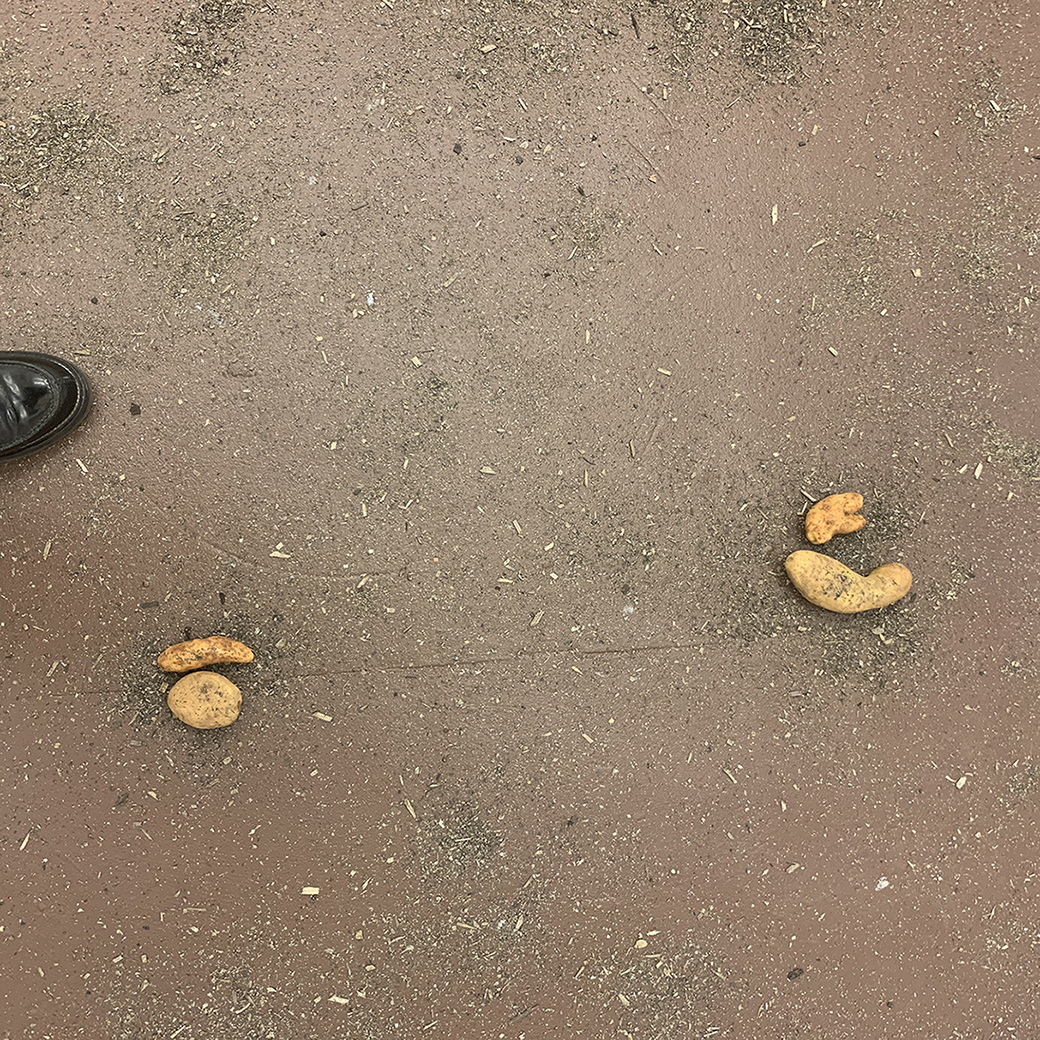
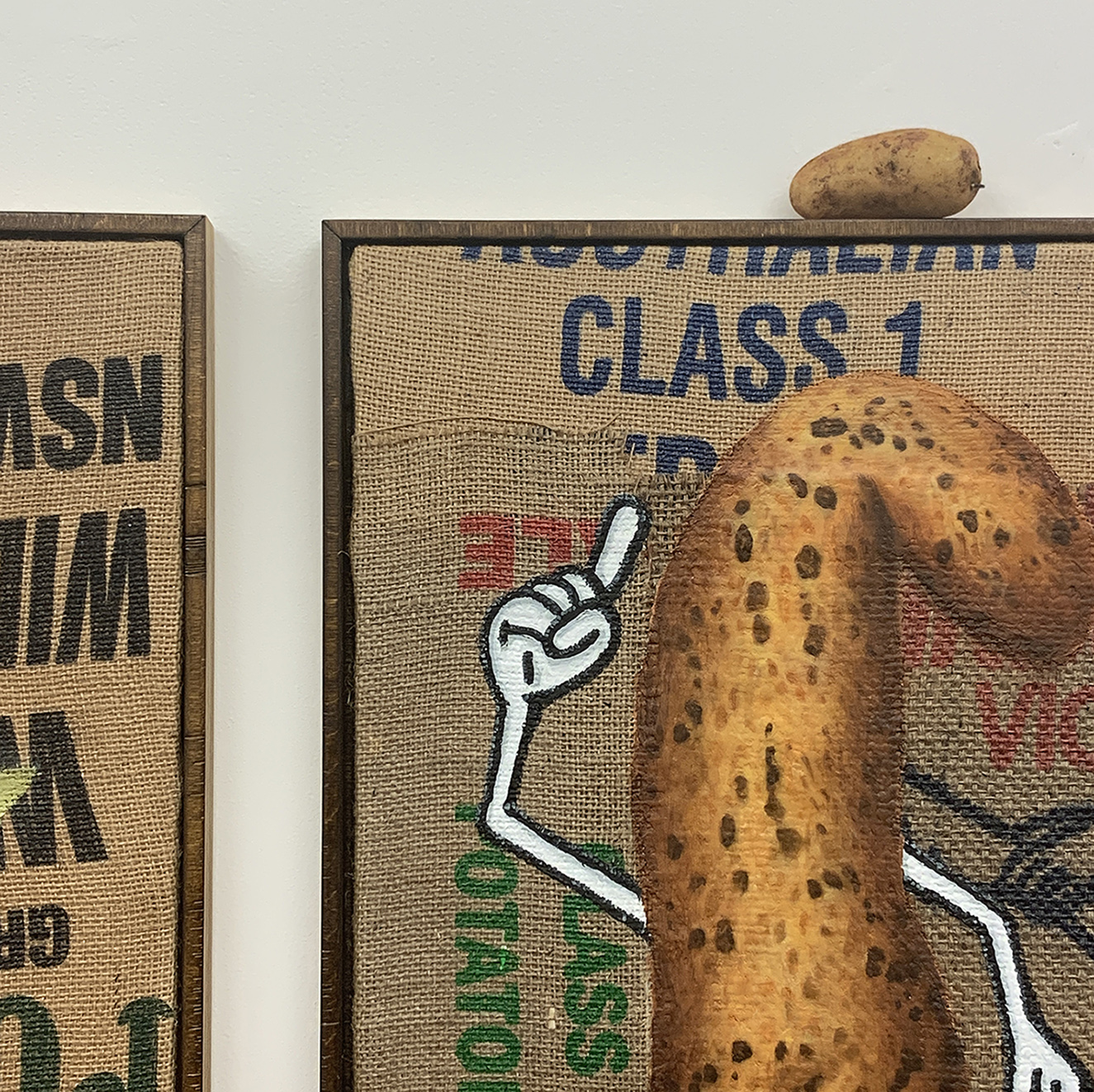
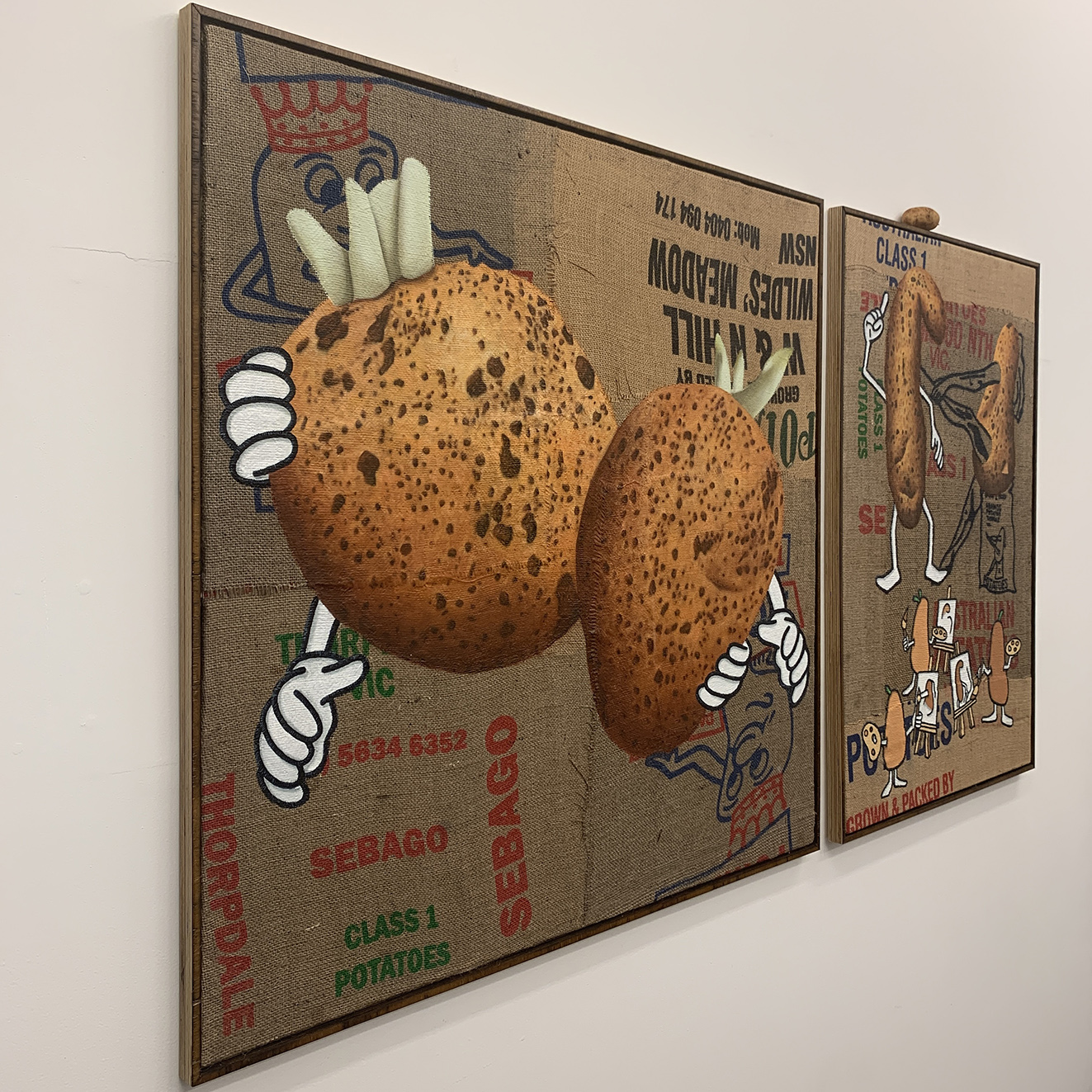
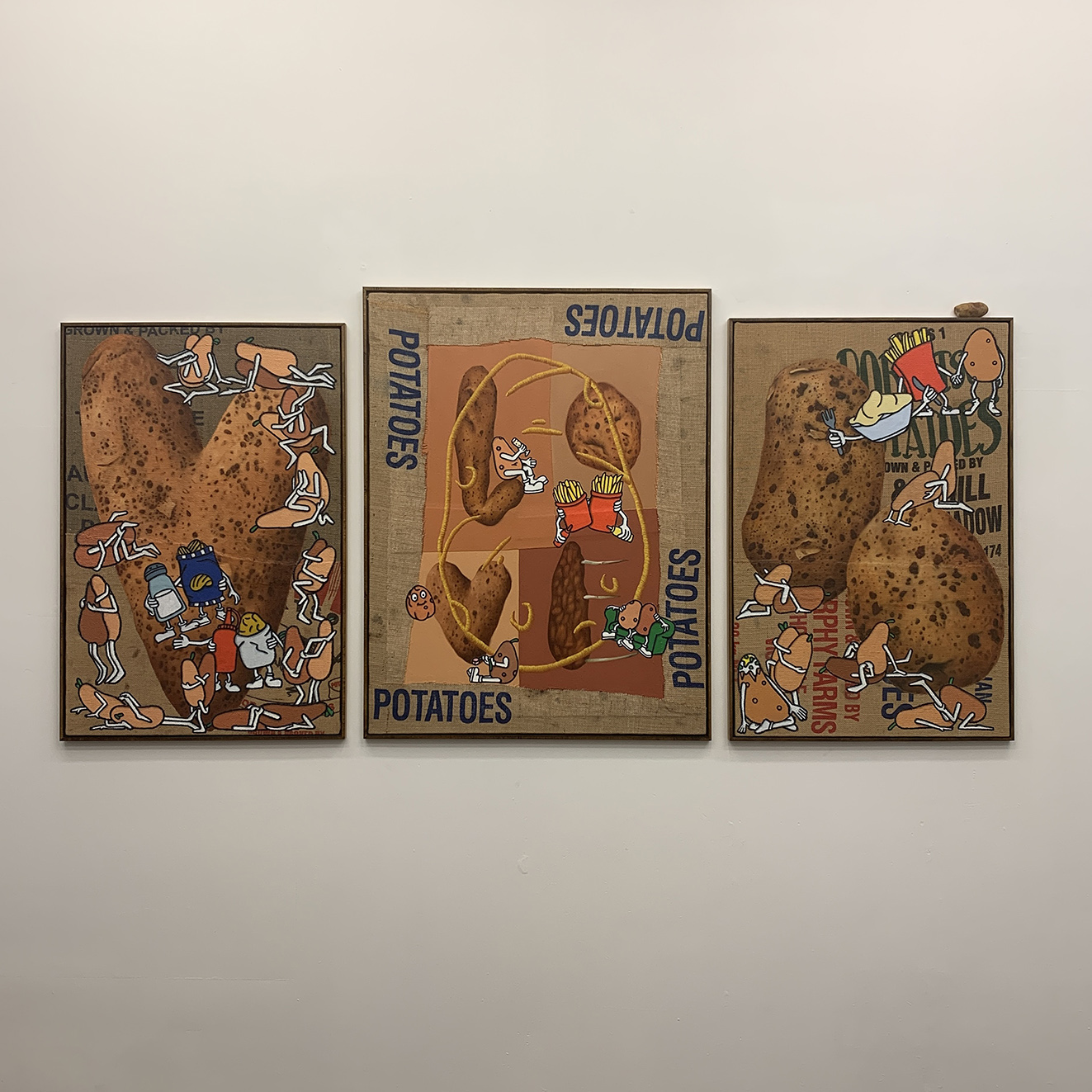
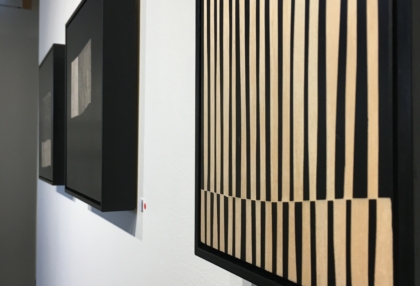
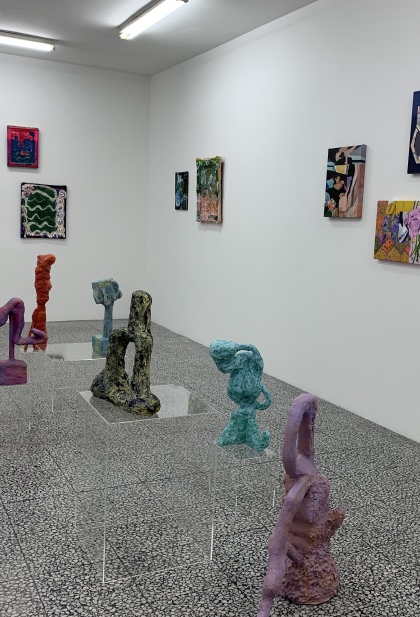
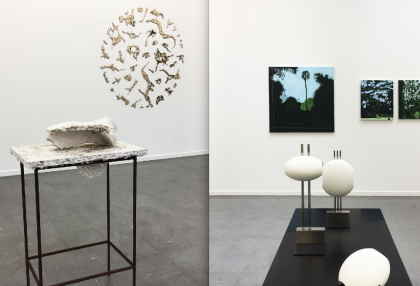
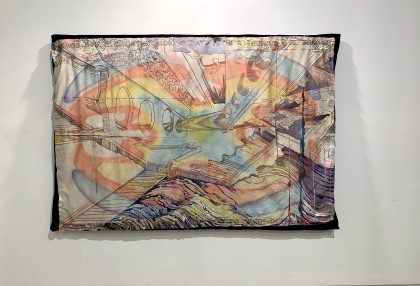
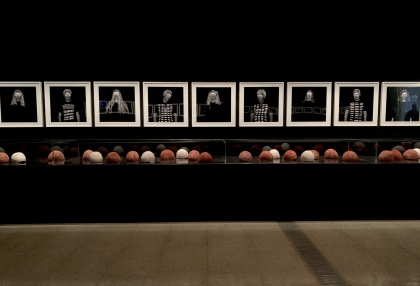
No Comments